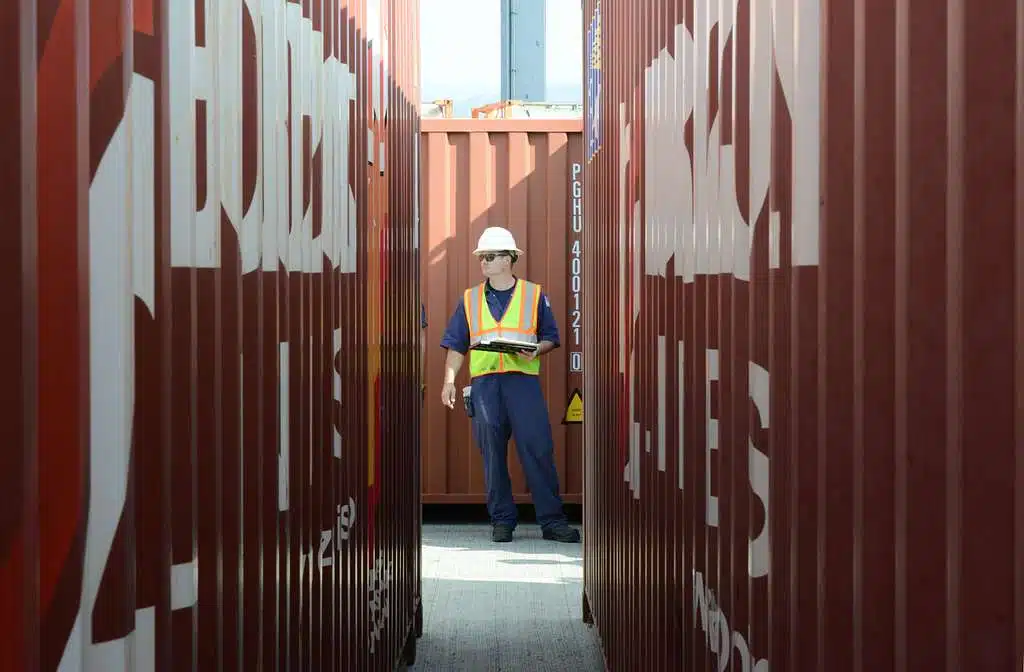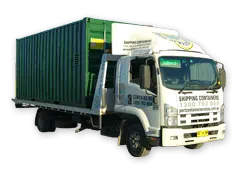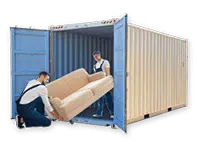Shipping containers, whether used for storage, construction, or other purposes, are valuable assets that need effective protection. Preventing theft is crucial for ensuring that your investments are safe and secure. This guide will walk you through the essential methods and strategies to safeguard your shipping containers.
Prevent Shipping Container Theft with These Proven Methods
To effectively prevent shipping container theft, it’s important to implement a multi-layered security approach that deters potential thieves, detects any intrusion attempts, and defends your property.
1. Strategic Placement
- Location Matters: Position your containers in well-lit, highly visible areas. Thieves are less likely to target containers that are in clear view.
- Group Containers: Place multiple containers together, making it harder for thieves to access a single unit without being noticed.
2. Physical Barriers
- High-Quality Locks: Invest in heavy-duty padlocks or lockboxes designed specifically for shipping containers. High-quality locks are your first line of defense.
- Security Bars: Reinforce doors with security bars or internal locking mechanisms. These provide an extra layer of protection against forced entry.
- Fencing: Surround your container with fencing to limit unauthorized access.
3. Surveillance Systems
- CCTV Cameras: Install cameras around the perimeter of your storage area. Modern CCTV systems with night vision capabilities and motion detection can alert you to any suspicious activity.
- Motion Sensors: Integrate motion sensors with your surveillance systems to trigger alarms or notify you of unauthorized movement.
4. GPS Tracking and Alarms
- GPS Trackers: Equip your containers with GPS tracking devices to monitor their location at all times. This is especially important for containers that are being transported.
- Alarm Systems: Install alarms that activate if the container is tampered with or moved without authorization.
Top Security Measures to Protect Your Shipping Container
High-Security Locks
- Choose locks that are specifically designed for shipping containers, such as high-security padlocks, lockboxes, or puck locks. These are far more resistant to cutting or tampering than standard locks.
Heavy-Duty Fencing
- Install heavy-duty fencing around the area where your containers are stored. A good fence acts as a physical barrier, making unauthorized access more difficult.
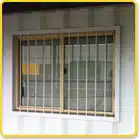
Lighting
- Ensure that the area around your shipping containers is well-lit. Lighting deters thieves and makes it easier to monitor the area during night hours.
Secure Entry Points
- In addition to locks, consider reinforcing entry points with steel bars or additional deadbolts. Doors are the primary target for intruders, so investing in tamper-proof solutions is critical for high-quality security. For containers with side opening features, extra reinforcements may be necessary.
Container Alarms and Sensors
- Install specialized alarms designed for shipping containers. These alarms can detect forced entry, motion inside the container, or even temperature changes, which is especially useful for dangerous goods. Integrated systems can send instant alerts to your phone or security team.
Deter, Detect, Defend: A Comprehensive Approach to Container Security
A comprehensive approach to container security involves deterring potential thieves, detecting any suspicious activity, and defending your container from unauthorized access.
Deter
- Visible Security Measures: Signage, security cameras, and lights can deter potential thieves from targeting your containers.
- Dummy Cameras: Even the appearance of surveillance can be enough to discourage theft.
Detect
- Surveillance Systems: Utilize CCTV and motion detectors to monitor and record any suspicious activity around your containers.
- Regular Inspections: Perform regular inspections of your containers to detect any signs of tampering or forced entry.
Defend
- Reinforced Structures: Modify your container with reinforced doors and additional locks to make forced entry more difficult.
- On-Site Security: If possible, employ on-site security personnel or utilize security patrols to monitor your storage area.
Choosing the Right Security Equipment for Your Container
Choosing the right security equipment for your container depends on your specific needs and the level of security required.
Locks and Lockboxes
- Invest in high-security locks designed for shipping containers. Lockboxes offer additional protection by covering the lock and making it inaccessible to bolt cutters.

Alarm Systems
- An alarm system that alerts you to unauthorized access can be a game-changer. Choose systems that offer mobile notifications for real-time alerts.
Surveillance
- CCTV cameras are essential for monitoring your containers. Choose cameras with high resolution, night vision, and motion detection capabilities.
GPS Trackers
- For containers that are frequently moved or shipped, GPS trackers provide real-time location data, ensuring you always know where your container is.
Heavy-Duty Door Seals
- Use industrial-grade door seals that provide extra resistance against tampering. For standard general purpose containers, reinforced door seals add an extra layer of defense, making it difficult for thieves to pry the doors open.
Container Cloaking Systems
- If you’re storing high-value goods, consider a cloaking system that disguises your container to make it look like a less valuable unit. This deceptive strategy can work as an additional deterrent and is cost effective for high-risk areas.
The Cost of Container Theft and How to Mitigate It
Container theft can result in significant financial losses, project delays, and operational disruptions. Mitigating these risks is essential for protecting your investments.
Financial Impact
- The cost of replacing stolen goods and containers can be substantial. In addition to the direct financial loss, there are costs associated with project delays and the potential loss of business.
Mitigation Strategies
- Invest in Quality Security: The upfront cost of security measures is far less than the potential losses from theft. High-quality locks, surveillance systems, and tracking devices are key investments.
- Insurance: Ensure that your containers and their contents are insured against theft. This provides financial protection in case of a loss.
- Regular Audits: Conduct regular security audits to identify and address any vulnerabilities in your security setup.
Reputational Damage
- For businesses, container theft can result in reputational damage that affects client trust. Companies dealing with container storage shipping or those offering a range of shipping solutions should maintain reliable security practices to avoid negative impacts on their brand.
Operational Downtime
- Stolen containers can cause significant delays in projects, especially for industries relying on 40ft shipping containers for critical operations. This downtime can translate to missed deadlines and financial penalties. Preventative measures like investing in high-quality locks and GPS tracking can help mitigate these risks and maintain smooth operations.
Shipping Container Security Best Practices for Different Industries
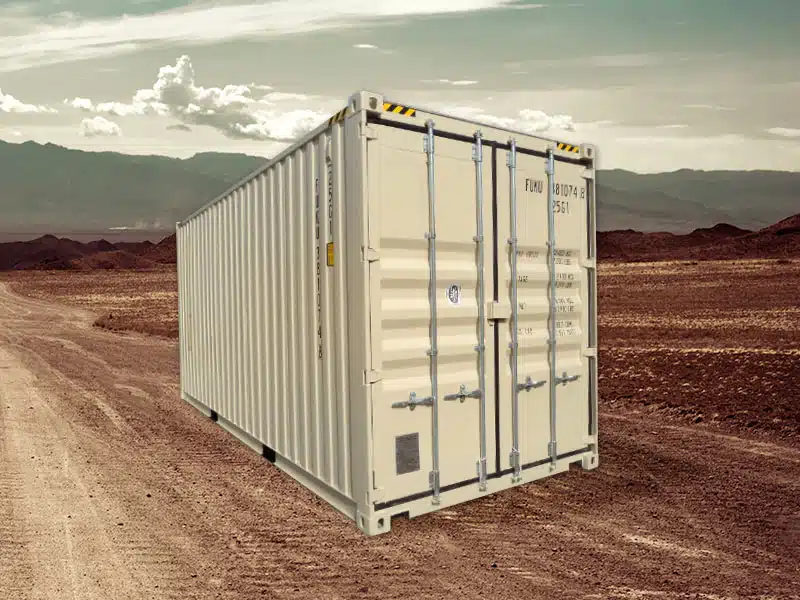
Different industries have specific security needs when it comes to shipping containers. Tailoring your security measures to your industry ensures maximum protection.
Construction Industry
- High Cube Containers: These are often used on construction sites for storage. Equip them with reinforced locks and on-site security.
- Tool and Equipment Storage: Secure valuable tools and equipment with additional internal locks and reinforced structures.
Mining Industry
- Remote Locations: In remote mining locations, ensure that containers are equipped with GPS tracking and satellite-linked alarm systems.
- Dangerous Goods Storage: For storing dangerous goods, use containers designed for hazardous materials with specialized locking mechanisms and fireproofing.
Retail and Small Business
- Pop-Up Shops: If you’re using containers for retail, ensure that they are secured with high-quality locks and reinforced doors, especially in high-traffic areas.
- Seasonal Storage: For short-term storage needs, such as seasonal inventory, use containers that can be easily relocated and secured.
Agriculture and Rural Businesses
- For those in agriculture using containers for storage shipping purposes, it’s essential to consider location-specific threats. Install containers in well-protected areas, utilize high cube models for added capacity, and employ wireless alarms with long-range connectivity, which are effective in remote locations.
Logistics and Warehousing
- In logistics, where storage and quick access are key, focus on using containers with a range of sizes tailored for your needs. Utilize a combination of side opening containers for easy access and comprehensive surveillance systems to monitor activity. Secure inventory with detailed tracking and regular audits to minimize loss.
Secure Your Shipping Containers with Confidence
By implementing these proven methods and best practices, you can significantly reduce the risk of theft and ensure that your shipping containers remain secure. Whether you’re dealing with a single container for a garden shed or managing a fleet of 40ft shipping containers for a major construction project, the right security measures can protect your investment and give you peace of mind.
3-Step Process to Secure Your Shipping Container:
- Assess Your Needs:
- Determine the level of security required based on the value of the contents and the location of the container.
- Choose the Right Equipment:
- Select the appropriate locks, surveillance systems, and tracking devices to protect your container.
- Implement and Monitor:
- Install your chosen security measures and monitor them regularly to ensure they are functioning correctly.


